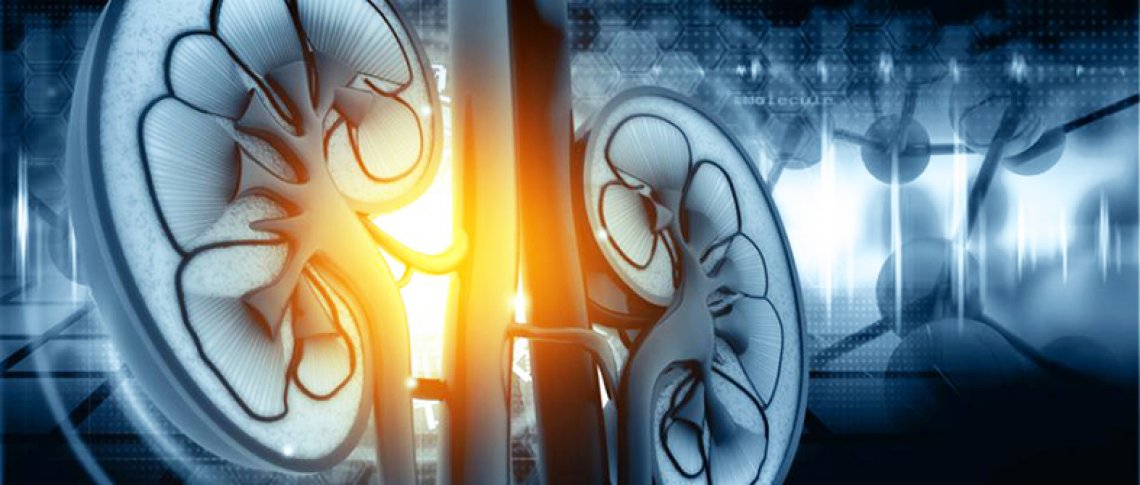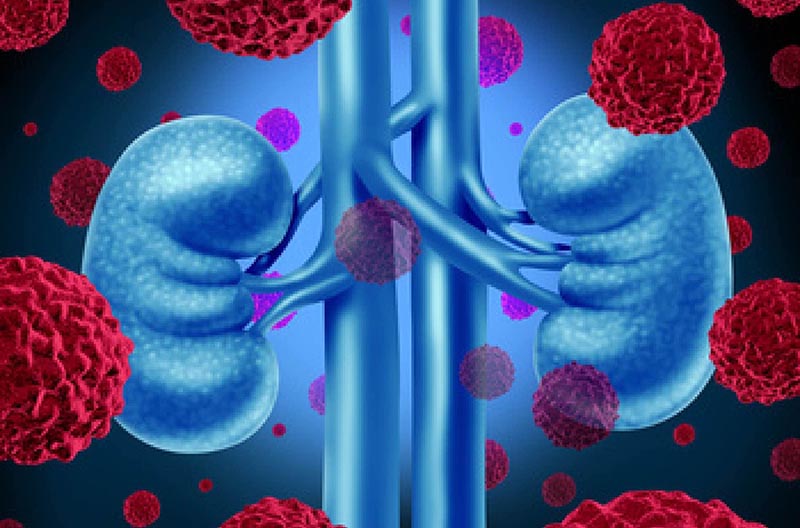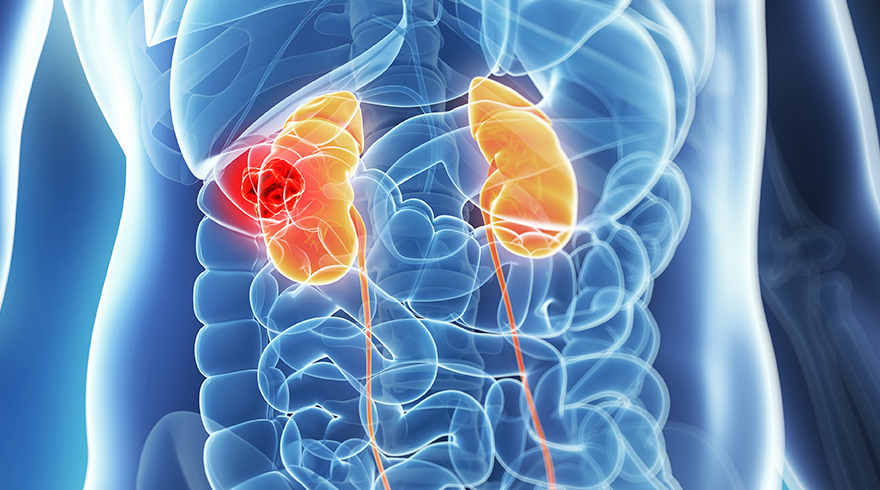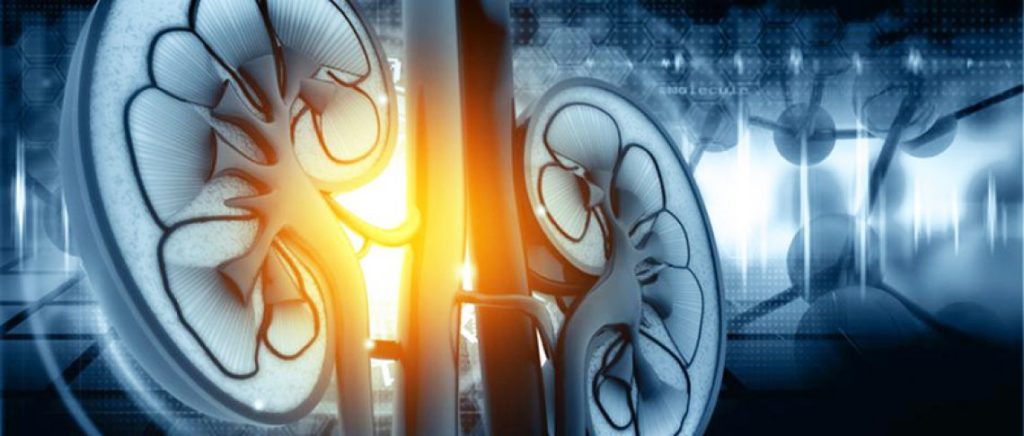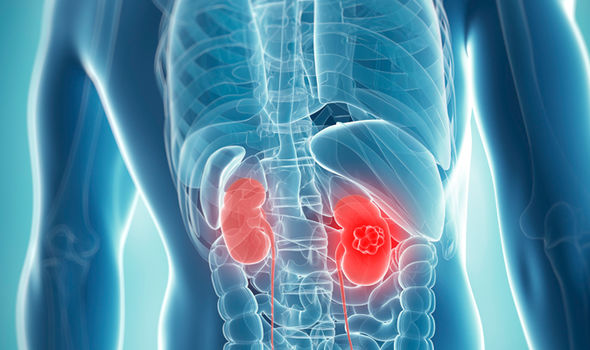Share this Page:
Von Hippel-Lindau (VHL) disease is caused by a change (mutation) in a tumour suppressor gene, called the VHL gene. When the VHL gene is mutated, this can lead to uncontrolled cell growth and the development of cancer. Lack of VHL protein caused by the mutation can also increase the growth of new blood vessels (angiogenesis), causing the tumours to become highly vascular with a good blood supply.
The incidence of VHL disease is about 1 per 36,000 live births. The most common VHL-related tumours are found in the brain and spinal cord (central nervous system, CNS), for example haemangioblastomas. Other tumours can be found in the pancreas, adrenals (pheochromocytomas), and kidneys (renal cell carcinomas, RCC).
Almost 60% of all patients with VHL will develop RCC or renal cysts. These typically develop in both kidneys (bilateral) and are found in multiple locations within the kidney. RCCs are found in 24% to 45% of patients with VHL and are always of the clear cell subtype.
Treatment for VHL associated RCC is surgery to remove the tumour(s). However, radical nephrectomy, which involves the removal of the entire kidney, leaves people at risk of end-stage renal disease. To prevent this, there has been a move to nephron-sparing surgery, such as partial nephrectomy, and/or ablation techniques, such as cryoablation or radio-frequency ablation (RFA).
